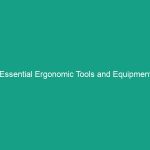Introduction
Good morning team! Today, we are going to discuss a critical topic that impacts all of us in our work Environment—essential HSE guidelines. Our focus will be on the principle of “thinking of the next person to avoid risks.” This concept is not just a catchy phrase; it’s a fundamental approach to ensuring Safety in our workplace. By understanding the risks and implementing Best Practices, we can create a safer environment for everyone. So let’s dive in!
Understanding Essential HSE Guidelines
Essential HSE guidelines are a set of principles and Procedures designed to promote health, safety, and environmental protection in the workplace. These guidelines are crucial as they help us identify potential Hazards and mitigate risks. When we think of the next person, we remind ourselves that our actions can impact others, making it vital to adhere to Safety protocols.
Many people believe that safety is an individual responsibility, but the truth is that it’s a collective effort. By prioritizing the safety of our coworkers, we foster a culture of accountability and care.
Key Hazards, Risks, and Safety Considerations
Now that we understand the importance of HSE guidelines, let’s discuss some specific hazards and risks that we might encounter in our work environment:
- Slips, Trips, and Falls: These are among the most common workplace injuries, often caused by wet floors, uneven surfaces, or obstructions.
- Hazardous Materials: Chemical spills or exposure to harmful substances can pose serious health risks.
- Equipment Safety: Improper use of machinery can lead to severe accidents.
- Ergonomic Risks: Poor workstation setup can result in musculoskeletal disorders.
Ignoring these risks can have real-world consequences, including injuries, lost productivity, and even legal repercussions. By being proactive and adhering to essential HSE guidelines, we can prevent these incidents.
Best Practices, Procedures, & Actionable Advice
Let’s explore some Best Practices that can help us minimize risks and maintain a safe working environment:
1. Conduct Regular Safety Inspections
Regular safety inspections help identify hazards before they result in accidents. Make it a habit to check your workspace for potential risks daily.
2. Use Personal Protective Equipment (PPE)
Always wear appropriate PPE, such as helmets, gloves, and Safety Glasses. Ensure that your coworkers are also equipped and encourage them to wear their gear.
3. Maintain Clear Communication
Effective communication is key to Workplace Safety. Always report hazards and encourage your colleagues to do the same. Use safety meetings to discuss potential risks and solutions.
4. Implement Lockout/Tagout Procedures
Before servicing equipment, ensure that proper lockout/tagout procedures are followed to prevent accidental start-up and injuries.
5. Promote Ergonomics
Encourage proper ergonomics at workstations to reduce strain and injury. Provide Training on how to set up work areas to promote good posture.
Real-World Example
Consider a scenario where a worker neglects to clean up a spill, leading to a slip and fall accident. This not only affects the injured worker but also the entire team, as productivity may suffer while the incident is addressed. By thinking of the next person and taking responsibility for our environment, we can avoid such incidents.
Regulations, Standards, and Compliance
It’s essential to adhere to relevant safety Regulations and Standards, such as those set by OSHA (Occupational Safety and Health Administration) or ISO (International Organization for Standardization). Compliance with these regulations is not just a legal requirement; it helps protect you and your colleagues.
Understanding safety protocols ensures that we minimize risks and create a culture of safety. Remember, safety should never be compromised, and compliance should always be a priority.
Employee Engagement & Discussion
Now that we’ve covered the essential HSE guidelines, let’s take a moment to reflect. What safety challenges have you encountered related to this? How can we improve our practices as a team? Your insights are invaluable, and discussing them will help us foster a safer work environment.
Conclusion & Key Takeaways
In conclusion, thinking of the next person is a crucial aspect of Workplace Safety. By following essential HSE guidelines, we can effectively manage risks and create a safe environment for everyone. Remember to conduct regular safety inspections, use PPE, maintain clear communication, follow lockout/tagout procedures, and promote ergonomics.
Let’s commit to applying these practices every day and prioritize safety in our work environment. Thank you all for your attention and dedication to making our workplace safer!


